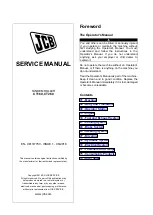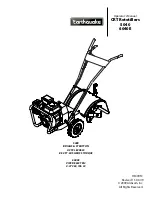
48
SDA³ / SDA³ E - Rev.04 - Mar / 22
7. Adjustments and operations
Practical test for seeds and fertilizer distribution
IMPORTANT
- Data in the previous tables (seed and fertilizer) may vary due to many factors.
Therefore, we request that you carefully pay attention to the following topic:
The most appropriate way to assess the amount of seed and fertilizer to be distributed
is on the same field where sowing will be carried out, as follows:
- Whenever it is possible, use the same tractor and operator for sowing.
- The correct tire inflation is important. Maintain the same pressure.
- Set the covering distance for the test. Example in the fertilizer table: 50 linear meters.
- Fill up at least to half the seeder hoppers. Before entering the delimited area, it is
necessary to run a few meters to completely fill up the metering system.
- Place the collection bags in the fertilizer dispensers (use preferably plastic bags).
- Move the tractor along the delimited area, using the same speed that you will work
throughout the sowing. (Recommended average speed = 8 km/h).
- Now just weigh the fertilizer and seeds contained in the bags, take the average for
each one and compare them to the second line of the tables (grams in 50 meters per row
unit).
- If necessary, change the adjustments and perform the test again.
- After achieving the desired amounts and still at the terrain, move the tractor at the
same speed; however leaving the seed and fertilizer to reach the soil, for better checking
the uniformity of the distribution.
- The assessment of soybean distribution can be carried out by the number of seeds
per linear meter and its adjustment is made by using the already mentioned settings.
ATTENTION!
- The work speed variation affects the uniform seed distribution;
- When there is a change in the lot of seeds as well as in the fertilizer manufacturer,
everything must be assessed again;
- It is important to assess all adjustments again after the first day of work;
- Never change the adjustments while the seeder is moving.
















































